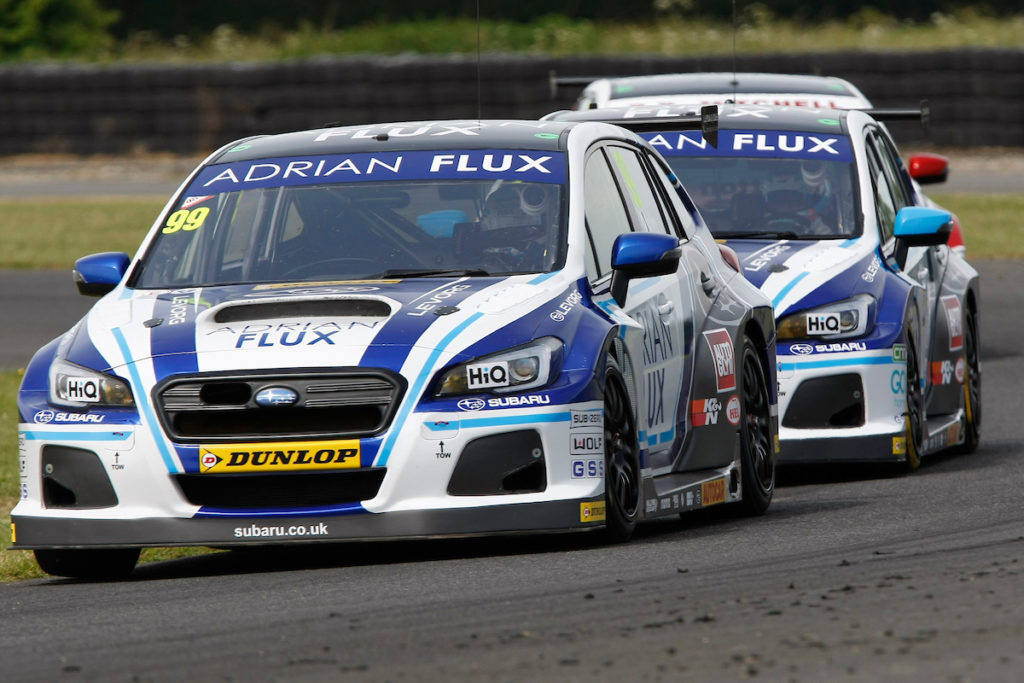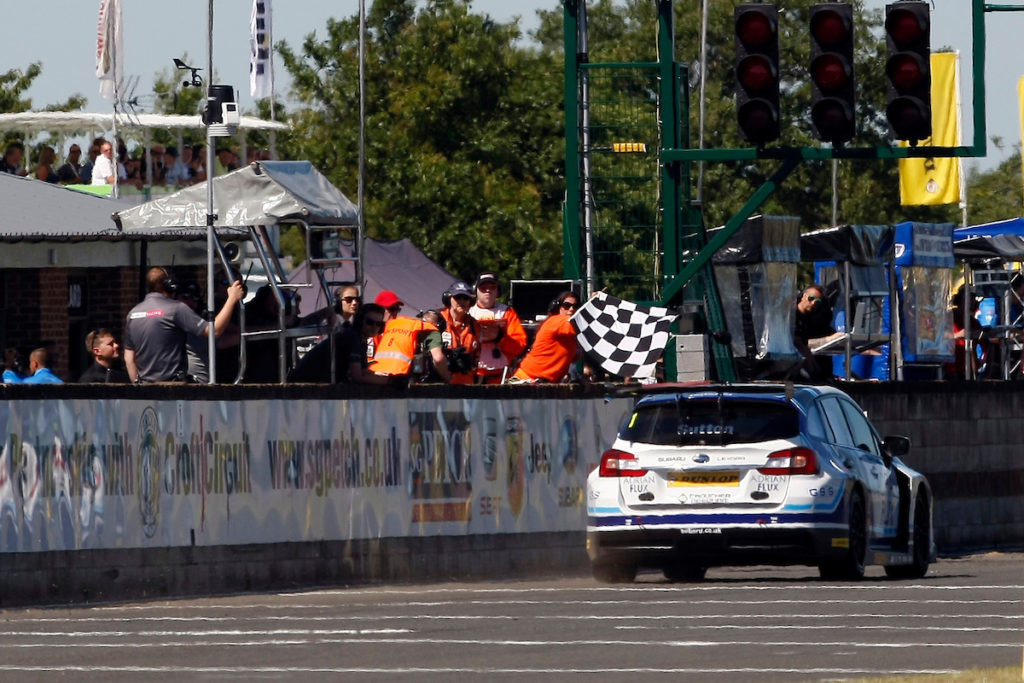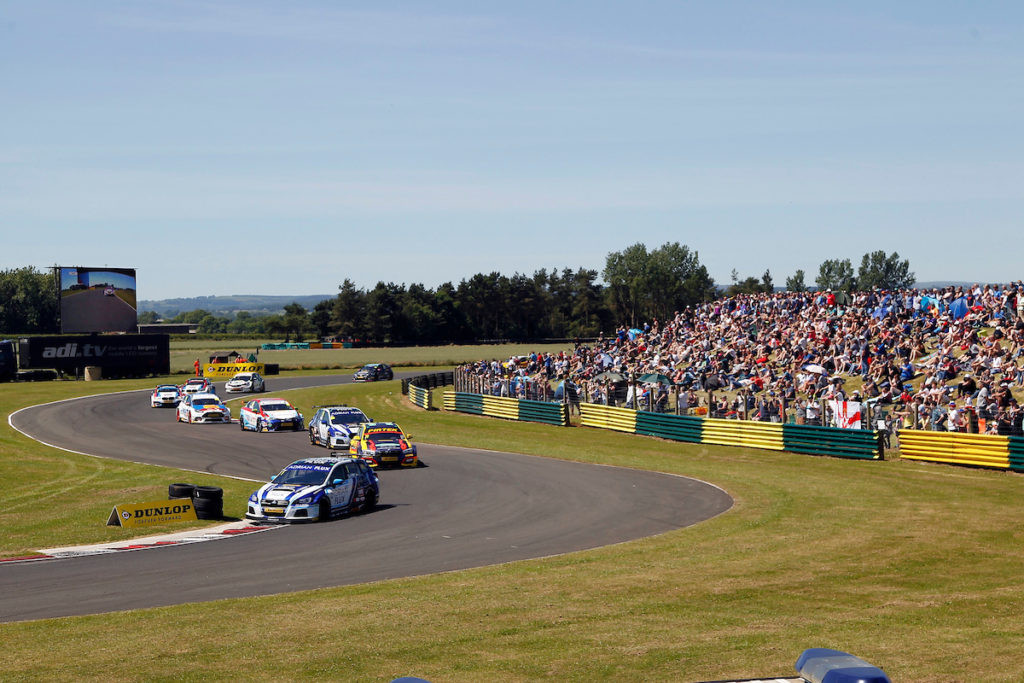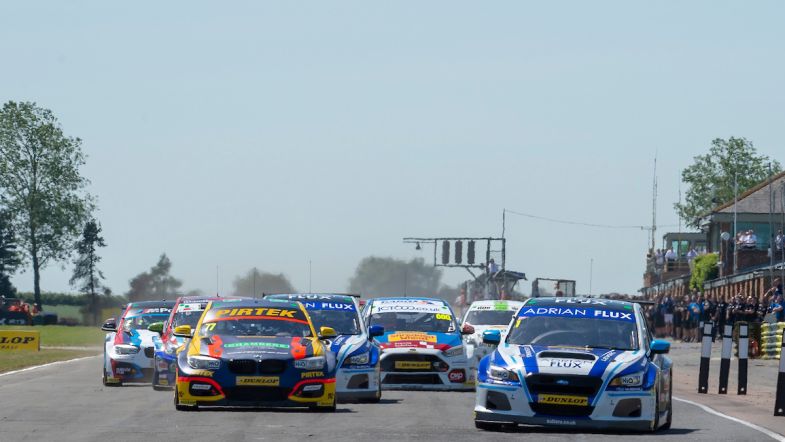How Team BMR simulated success at Croft
It’s fair to say that there was one hot topic of discussion doing the rounds when the British Touring Car Championship season hit the half-way stage at Croft, with Team BMR returning to form after a tough start to the year.
Heading for North Yorkshire, there had been little reason to cheer for the Subaru squad, which had been hampered by a range of issues during the opening part of the year.
Some of those issues were down to the late switch of engine builder over the off-season, with the team struggling to extract the maximum performance from the new Swindon unit, whilst the additional 30 kilos of ballast for rear-wheel drive cars also didn’t help.
It meant that, even with improvements to the set-up and the balance of the car, defending champion Ash Sutton found himself down in 13th place in the standings heading into round five – with team-mate Jason Plato having failed to even score a point.
With Croft being a circuit where rear-wheel drive cars have traditionally been strong, the team became focused on finding a solution ahead of round five because, as Sutton readily admitted, ‘if it wasn’t going to happen at Croft, it wasn’t going to happen anywhere’.
When the Subarus were much closer to the pace in practice, and then locked out the front row of the grid, social media immediately went wild over the topic of boost – with the Levorg having been given an increase ahead of the weekend.
That 20 millibar increase was a result of TOCA looking into the baseline boost that had been allocated at the start of the season, with engineers from Swindon having discovered an anomaly in the way the boost was presented.
Yes, that increase did help, but even rival teams admitted that the size of the increase wasn’t enough to explain how the Levorg had suddenly become a contender.
The speedtraps also suggested that it wasn’t simply a case of being given a massive increase in boost either, with the Levorgs in the bottom half of the speed traps – in contrast to twelve months ago when they were right up at the top.

So if it wasn’t simply a case of boost, where had the performance come from – and how had BMR found it when the cars hadn’t been out on track testing?
It was that fact as much as anything that led to head scratching elsewhere, with one team boss saying he couldn’t understand how such a big jump could be made in the space of a few weeks.
Of course, there was the fact that the performance of the Levorg had been so below par in the first four rounds, that when improvements were made, there was a chance they would be abnormally large.
If anything, BMR had expected Croft to be the second phase of a more gradual move forwards up the grid, but a poor showing at Oulton Park meant the performance arrived in one go.
“With our issues at the start of the year, we had to look at all the alternatives to improve performance and we knew there was a moment where we would make a big jump – and we expected to be closer to the pace at Oulton Park,” team boss Warren Scott said. “We thought we would go forwards there and were surprised to be so far down; we knew we had to do something.”
With that in mind, further changes were brought in for Croft with a radically revised car taking to the track.
All those revisions, allied to the fact that the circuit favours rear-wheel drive, combined to create the ideal conditions for BMR to spring a surprise.
“We brought in some aerodynamic upgrades, cooling updates, induction updates and centre of gravity height updates,” performance engineer Tony Carrozza explained. “TOCA has been penalising us with the centre of gravity height since 2017 and we have managed to make some revisions to the car that have made a substantial difference and have brought the aero platform back to where we need it to be – which is a big change.

“The cooling package was a big update that we rushed through for Croft and it’s simple physics that if you can get your induction temperature down, you can get more performance. It’s one of the many little things that we looked at and thought we could gain half a percent there and half a percent there.”
But how was the team able to look at those potential gains and then arrive at Croft having found them – given there wasn’t the opportunity go out and test?
“We ran a lot of simulations to see how all those little gains would combine and where we could find lap time performance,” Carrozza continued. “It all meant that we could arrive at a rear-wheel drive circuit in a competitive position, and we didn’t expect to be far off the pace.
“The simulations have been going on for two or three years now and we have been building on them and building confidence in them. You make a change, roll it out onto the track and you can see the result of the simulations.
“It means you can test more options and rather than bolting one update on the car, you can bolt 70 on in simulation and work out which is best. It saves us time and money in the greater scheme of developing the car but to do that, you have to validate the simulations.
“That is what we have done in the past and are reaping the rewards of the work we have carried out.”

There have been lots of comments from fans online about boost following Croft but it’s clear to see that the improvement in the Subaru wasn’t down to a single factor.
For whatever reason, BMR had the car working on track and it’s understandable to see rival teams concerned about the manner in which the improvements came given the dramatic upturn in fortunes.
Take Honda as a prime example. Matt Neal has come under fire for his comments about the situation but when you consider the amount of time and money that has gone into developing the new FK8 Civic, you can see why he is unlikely to be happy to see another car suddenly rocket up the order – be that the Subaru or something else.
Part of the problem regarding the Subaru is that it is something of an anomaly on the grid, with the unique engine configuration under the bonnet making it a different animal compared to the other cars it is competing against.
Its strengths come in other areas compared to the likes of the Honda, Ford, BMW and Toyota and it makes it an even more difficult balancing act to try and ensure that the performance of the different cars is relatively similar.
If the Levorg was given more boost then there is a good chance it would drive off into the distance, so BMR has had to look for ways to gain time in other areas – and clearly they did at Croft. The handling continued to improve and the cooling revisions allowed the team to improve the engine performance, thereby enabling the drivers to make better use of the power available to them.
That’s partly why they came away from the weekend with two wins to their name despite the fact that the car was still lacking straight line speed.
Of course having a car that is quick in a straight line helps because if you are a sitting duck in the straights – think Plato v Moffat at Oulton Park – then you will struggle to compete, but it’s all about the package as a whole and at Croft, the Subaru package worked.
What will now be interesting to see is whether the upturn in form continues at Snetterton after the summer break or whether BMR go back to their struggles. The upcoming Dunlop tyre test will be important in that respect but only time will tell whether Croft was a perfect storm, or whether the concerns of other teams on the grid were justified.










